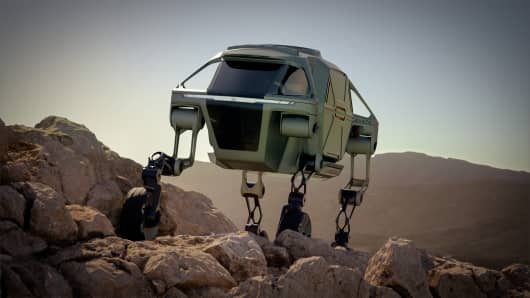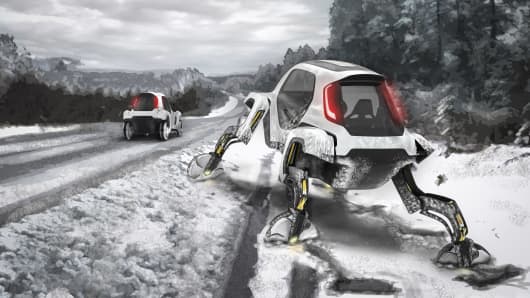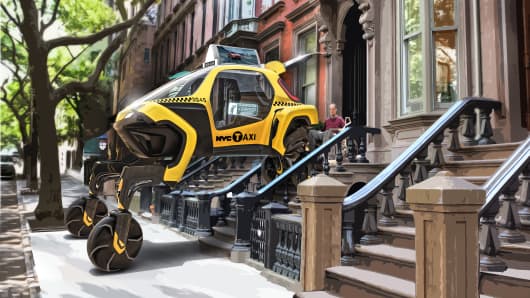
Hyundai unveiled a walking car design – complete with robotic legs – that the company claims is the future of the first responder industry and has “limitless” purposes.
Debuted at the CES technology expo in Las Vegas on Monday, “Elevate” is designed for use at natural disaster sites, with users able to drive, walk, or climb over “the most treacherous terrain.” Currently in the early concept stages, there is no official timeline for its commercial roll-out.
Hyundai has been working in partnership with Detroit firm Sundberg-Ferar on the concept for almost three years. Elevate would be the first Ultimate Mobility Vehicle with moveable legs, and the first to combine technology found in both electric cars and robots.
Capable of “both mammalian and reptilian walking gaits,” the vehicle can climb walls, step over large gaps and move in any direction – all while keeping its passengers level. Its legs are also retractable, providing a regular driving mode that reduces energy use and allows Elevate to be operated as a normal car.
“Imagine a car stranded in a snow ditch just 10 feet off the highway being able to walk or climb over the treacherous terrain, back to the road potentially saving its injured passengers – this is the future of vehicular mobility,” said David Byron, design manager at Sundberg-Ferar, in a press release on Monday.
‘Limitless’ uses
John Suh, vice president and head of Hyundai Cradle, added that current rescue vehicles were only able to deliver first responders to the edge of a debris field, whereas Elevate can drive to the scene and climb right over flood debris or crumbled concrete.
“(But) this technology goes well beyond emergency situations,” he said. “People living with disabilities worldwide … could hail an autonomous Hyundai Elevate that could walk up to their front door, level itself, and allow their wheelchair to roll right in. The possibilities are limitless.”
Allahyar Montazeri, lecturer in engineering at Lancaster University, told CNBC via email Wednesday that the proposed design could take vehicle use in rough terrain to “the next level” – but he noted that the mechanics were complex.
“The ultimate challenges … are uncertain parameters of terrain and ensuring the dynamic stability of the vehicle,” he said. “For example, in a realistic terrain, the vehicle may be challenged by regions causing tip-over, trapped wheels, or loss of traction. Some regions are not traversable at all and others may cause disastrous system failures.”
Montazeri added that the concept demanded an advanced design, incorporating elements of artificial intelligence to analyse potentially dangerous terrain with minimal action from the vehicle’s operator.
[“source=cnbc”]

